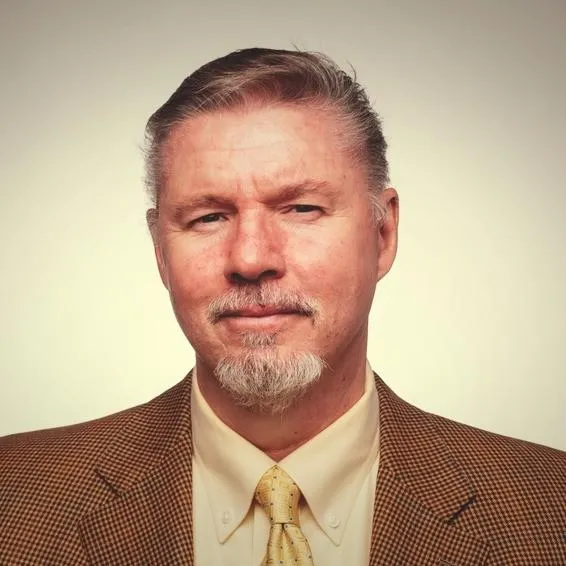
How Scarboro Golf & Country Club Reinvented Itself with Family-Focused Culture and Smart Governance
❓Don't use Spotify? Find us on all other podcast players here
📞 Want to win with AI but don't know where to begin and don't want to experiment and figure it out on your own? Want to know exactly where AI can save your club time, money, and headaches?
Our Ace AI Audits uncover high-impact opportunities to streamline operations, boost member service, and eliminate inefficiencies leveraging the free and paid AI tools available to you today.
Before you invest in new tech, let us show you what’s possible—and what you’re possibly missing.
Call us today at 1-866-838-8581 and ask for more information on our Ace AI Audits and we will send it over right away.

Reinventing and Reinvesting: How One Club Rebuilt Its Future Through Board Leadership, Culture, and Data
Private golf clubs across North America face a generational challenge: How do you evolve while preserving the traditions that members cherish?
For Scarboro Golf & Country Club, one of Canada’s oldest private clubs and the country’s only A.W. Tillinghast design, this wasn’t just a strategic question, it was an existential one.
In this episode of The AceCall.ai Podcast, we sat down with longtime member and past board director John Turley-Ewart, who helped guide Scarboro through a remarkable transformation.
With the help of his fellow Board Directors and the talented and committed Scarboro management and staff, they brought the club back from declining membership and aging demographics to a thriving, family-first community with a waiting list and a modernized approach to governance.
Here are the key insights from John’s journey that other club managers and board members can learn from.

The Turning Point: Facing Demographic Decline
When John joined the board, the writing was on the wall.
The average member age hovered in the early 60s, and new principal members weren’t arriving fast enough to replace those aging out.
Rather than panic, the board paused to ask a critical question:
What kind of club do we want to be—and who do we want to serve in the decades ahead?
From that starting point, everything began to shift.

From Curling to Core Identity: Choosing Purpose Over Tradition
One of the biggest moments in Scarboro’s pivot was the retirement of its longstanding curling program.
The curling rink, built in the 1950s, had once served as a year-round engagement tool.
But as usage declined and infrastructure demands mounted, a hard choice had to be made.
This wasn't just a budget decision. It was a values decision.
“We realized that golf was our strength,” John said. “We had a Tillinghast course—one of a kind in Canada—and it was time to double down on that identity.”
By focusing squarely on its core product of the golf experience Scarboro set the stage for revitalization.

Rebuilding Around Families: The Power of Intergenerational “Stickiness”
With curling gone, the board asked: What would attract younger members and make them stay?
The answer was “stickiness.”
“We had to make Scarboro a place where families could create memories, not just one principal member playing rounds,” John explained.
That led to a deliberate push to create a family-first culture:
Expanded junior golf camps, often filling the putting green with 40+ kids
Investment in simulators with games for children and families
A lounge-style space near the simulators to welcome families year-round
A growing focus on community and mentorship across generations
It worked. Scarboro became a club where kids grow up, not just tag along.

Leveraging Proximity as a Competitive Advantage
While many clubs promoted sprawling suburban acreage, Scarboro leaned into its urban proximity.
“There are people who want to golf—but don’t want to drive 90 minutes to do it,” John said. “Being in the city became a huge asset.”
The team focused recruitment efforts on local communities within a 30-minute drive.
And rather than relying solely on advertising, they empowered their greatest marketing channel: existing members.
An incentivized referral program brought in neighbors, friends, and colleagues—people who immediately understood the value of accessible golf.

Smart Governance: Strategy Starts with Structure
None of these changes would have stuck without a board culture of openness and discipline.
“It started with the board being open to change,” John emphasized. “We had to let go of the idea that we already knew best and start listening to what members—especially future members—wanted.”
That meant:
Clarifying roles and responsibilities across board, management, and committees
Empowering professionals like the GM, Head Pro, and F&B team to bring ideas forward
Actively sourcing future board members from committee work to preserve institutional knowledge
Boards changed, but the culture of continuity remained.

Capital Planning and Financial Foresight
Behind every visible improvement—from the new practice range to the stunning clubhouse maintenance—was a commitment to financial discipline.
Scarboro separated its operating budget and capital budget, allowing the board to:
Build a healthy capital reserve
Tackle infrastructure projects like the full irrigation overhaul
Invest in member-facing improvements without risking cash flow
Crucially, capital planning was tied to scenario analysis—anticipating various futures based on dues levels, member churn, and inflation. The result: no surprises when it came time to act.

Culture Eats Strategy—But Culture Requires Strategy Too
When asked how Scarboro's culture changed during his time, John pointed to something often overlooked:
“We created space for every demographic to feel they belong,” he said. “It wasn’t about replacing older members. It was about creating a shared space across generations.”
Some tangible ways that happened:
Lounge areas designed for both adults and kids
Summer camps that taught not just golf, but etiquette and community values
Consistent member communication and town halls to gather feedback and avoid cliques or silos
It wasn’t forced. It was facilitated.

People Over Policy: Keeping the Community Intact
At private clubs, friction is inevitable. Whether it’s tee time pressure, hole redesigns, or slow service, the key is how leadership responds.
John offered this guidance:
“You don’t fix problems by blaming members. You fix problems by improving systems.”
When tee time complaints surfaced, for example, the board didn’t call out overzealous members. Instead, they reevaluated tee sheet design, guest policy timing, and communication protocols—grounded in data and aimed at fairness.
The tone? Always collaborative. Always community-first.

Committees: Your Club’s Succession Engine
One of the best practices Scarboro leaned into was the strategic use of committees—not just to get work done, but to groom future board leaders.
“Committees are where you socialize people into the culture and complexity of running a club,” John said.
This structure allowed:
Talent identification across multiple domains (finance, capital planning, membership)
Faster onboarding for new board members
A built-in system for preserving institutional memory
In short, committees became the farm system for good governance.

Data Over Opinions: Scarboro’s Decision-Making Shift
Perhaps the most significant evolution was Scarboro’s embrace of data-driven decisions.
“At the end of the day, we're in the dues business,” John explained. “And you can’t guess your way to sustainability.”
That meant collecting and analyzing:
Member usage data (tee sheet, simulators, events)
Round volume by demographic and time of day
Inventory trends in the Pro Shop
Feedback loops from surveys and informal channels
Armed with real insights, the board and management could build consensus with confidence—not gut feelings.

Where AI Fits In: From Reception to Retail
John, who also has experience training large language models, sees tremendous AI potential at private clubs.
Some immediate wins he suggested:
AI-powered phone reception to free up staff for face-to-face hospitality
Tee sheet optimization based on actual usage trends
Retail inventory forecasting using sales and demographic data
Decision support tools for boards evaluating capital projects
“Use high-tech to enhance high-touch,” he said. “That’s the future of private clubs.”

Final Thought: Purpose, People, and Progress
Scarboro’s turnaround wasn’t magic—it was leadership.
It was a board that listened. A management team that executed. And a community that bought in.
Whether you're running a private club facing similar generational shifts—or trying to strengthen a successful operation—this story offers a blueprint for what’s possible when you lead with clarity, culture, and care.
👇 Want help using AI to streamline operations and elevate the member experience at your club?
Call us at 1-866-838-8581 to request an information package and free walkthrough of our AI Audit & Consulting Services—built specifically for golf clubs.
